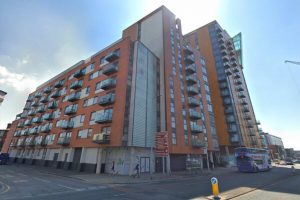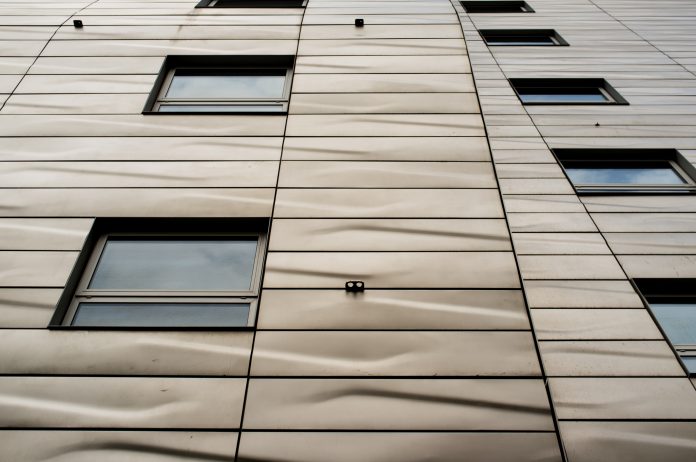Following calls by the Housing, Communities & Local Government Committee for the UK government to end the “cladding nightmare” for residents of tall buildings, Fieldfisher construction partner Helen Andrews looks at how far the funding allocated to tackle the issue is likely to stretch
The remediation of potentially dangerous cladding systems on residential buildings of 18m and above in the private and social housing sectors has been cited as “an absolute priority” for the UK government.
Aside from the serious safety risks posed by unsafe cladding, politicians, building owners and residents are desperate to resolve this matter urgently as many high-rise properties have been rendered unmortgageable and unsellable until they are certified fire-safe.
In March 2020, the government announced a £1bn Building Safety Fund to support the remediation of unsafe non-Aluminium Composite Material (ACM) cladding. This was in addition to the £600m already allocated to remediate the highest-risk ACM cladding (of the type that was in place on Grenfell Tower) by June 2020.
On 6 April, Neil O’Connor, director of the Ministry of Housing, Communities & Local Government’s (MHCLG) Building Safety Programme, issued a statement clarifying that, such is the importance of making buildings fire-safe, the government expected remediation work to continue within safety guidelines wherever possible during the Covid-19 lockdown.
Despite these assurances, the government’s measures have been criticised for falling far short of what industry consultations suggest is required to fix an estimated multi-billion pound problem for occupiers of the UK’s high-rise buildings.
On 12 June, a report by the Housing, Communities & Local Government Committee warned that the £1bn safety fund will only cover a third of the 1,700 buildings requiring remediation.
In its progress of remediation update, also published on 12 June, the committee said: “The government is clearly trying to find ways to fit a £3bn liability into a £1bn funding pot”. It suggested that this is being effected by imposing a short registration window (from 1 June-31 July 2020) and restrictions on social housing providers accessing the fund.
The committee also censured the government’s failure to set a hard deadline for remediation of cladding and other fire safety issues, and called for ministers to commit to ensuring that all buildings of any height with ACM cladding are fully remediated of fire safety defects by December 2021, and that all other buildings with any form of dangerous cladding are remediated by 2022.
Legal action brewing
While debate rages over how much the government should pay towards remediation of fire safety defects, many residents of buildings with unsafe cladding continue to pay hundreds of pounds a month for waking fire watches and face bills of tens of thousands of pounds for remedial work to fix fire safety issues.
Growing resentment against these costs has been compounded by limitations on who can apply for funding, especially as some who moved quickly to remediate their buildings have found themselves barred from the government scheme.
 Leaseholders of Skyline Central 1 in Manchester, for example, launched a judicial review in June against housing secretary Robert Jenrick, due to their illegibility to access the safety fund because work to their tower started prior to the government’s budget announcement on 11 March.
Leaseholders of Skyline Central 1 in Manchester, for example, launched a judicial review in June against housing secretary Robert Jenrick, due to their illegibility to access the safety fund because work to their tower started prior to the government’s budget announcement on 11 March.
As matters stand, Skyline leaseholders must pay between £8,000 and £27,000 each towards remediation work. Residents argue that the fund’s eligibility criteria are “conspicuously unfair” given the pressure ministers were putting on high-rise buildings to be made safe more than a year before the funding was announced.
Clive Betts MP, who chairs the Housing, Communities & Local Government Committee, commented in the committee’s 12 June report that “it is time for the government to commit to end the scourge of dangerous cladding once and for all”, adding that “a piecemeal approach (…) will see homeowners facing may more years of stress and financial hardship”.
With around 15% of the UK population living in flats in 2018, according to Eurostat, if property transactions continue to be disrupted by cladding issues, this is likely to present a new crisis for a housing market already under pressure from lack of supply.
Accessing the safety fund
Notwithstanding warnings about the inadequacy of the fund, the 6 April statement from MHCLG strongly suggests that £1.6bn will be the limit of the government’s funding support for cladding remediation.
The government published the prospectus for the new £1bn Building Safety Fund in May, outlining the requirement for potential applicants to register buildings before applying for the fund to ensure they meet certain criteria.
Once registered, MHCLG will work with building owners to determine their eligibility by completing certain technical assessments. Non-ACM cladding systems covered by the fund are set out in Annex A to the prospectus.
Registration opened on 1 June and will remain open until 31 July 2020.
Who is eligible to register?
In the private sector, building owners or freeholders whose buildings have or may have unsafe non-ACM cladding systems as part of the external wall system and who would otherwise have to pass the cost of remediation on to leaseholders through their service charge provisions are eligible to register.
Social housing units held in blocks owned in the private sector will also be eligible as part of the relevant application for that building.
In the social sector, registered providers of social housing can also register to receive funding. However, funding will only be available where the costs of remediation present a threat to the financial viability of the provider or the Housing Revenue Account.
For local authorities, this must be evidenced by a declaration from a section 151 officer at the registration phase, whereas registered providers will be required to provide a business case to evidence their financial position.
Scope of the fund
The fund is open to residential and commercial developments in both the private and social sectors.
In the private sector, if a building owner is eligible, the fund will cover capital costs that would otherwise have fallen on leaseholders for removing and replacing unsafe non-ACM cladding systems on buildings 18m and above.
In the social sector, the fund will meet capital costs of remediation to high-rise residential buildings regulated by social housing authorities.
The fund will not be available for:
- Remediation works commenced before the Budget announcement on 11 March 2020.
- Buildings under 18m in height.
- Non-residential buildings where there are no leaseholders, including hotels and hospitals.
Eligible costs covered by the fund are those attributed to capital costs of the project; however, these costs must be “reasonable” to be reimbursed.
Eligible items include works related directly to the remediation of unsafe non-ACM cladding systems, such as scaffolding, the removal and disposal of unsafe cladding, replacement materials and labour.
The fund will not cover works not directly related to the remediation of unsafe non-ACM cladding systems, including wider redecoration, internal works, the replacement of windows and general maintenance.
Allocation of funding
The prospectus suggests funding will be allocated on a first come, first served basis.
However, due to the maximum budget of £1bn, the MHCLG will ensure building owners have explored every available opportunity to fund the remediation, other than passing the cost on to private residential leaseholders.
Helen Andrews
Construction partner
Fieldfisher
+44 (0)20 7861 4000
LinkedIn: Fieldfisher

















